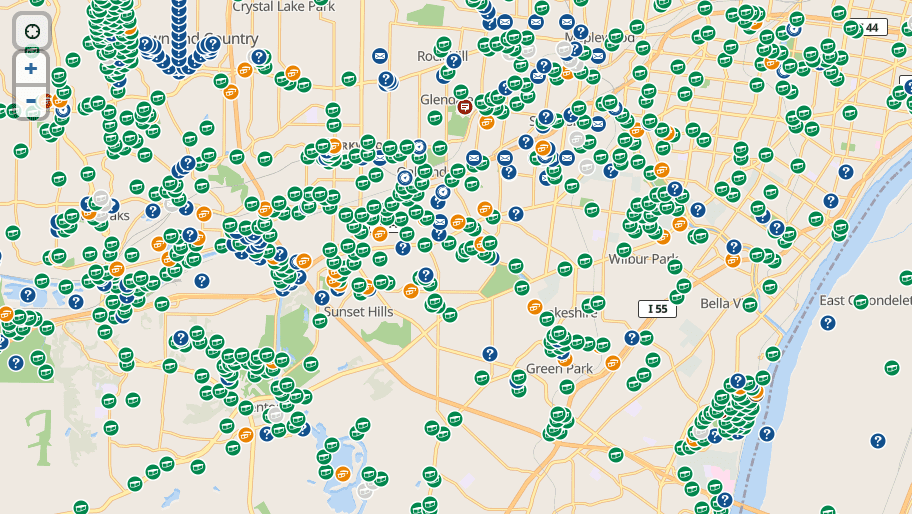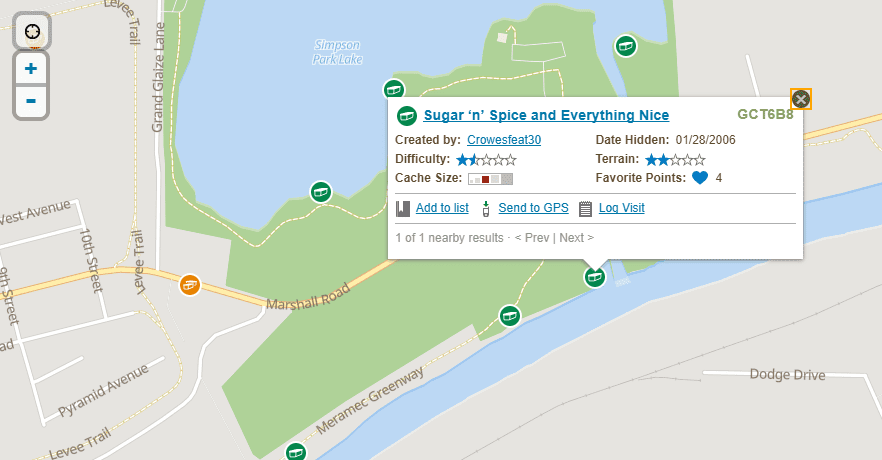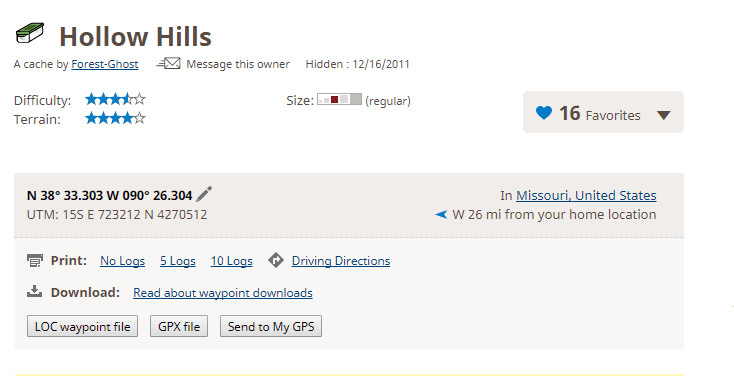Looking for a fun way to enjoy a little more life outside with the entire family? Give geocaching a try!

What is geocaching?
Geocaching is a kind of modern day GPS enabled treasure hunt. There are thousands of geocaches hidden in parks and along trails and greenways waiting to be discovered…by you.
With the help of a hand-held GPS or cell phone, you search for these caches by making your way to provided coordinates. But that will only get you so far. Once you are at the spot, you have to use your wits to find the hidden treasure. Caches can be hidden in trees, under rocks, within walls and pretty much anywhere the person hiding it can dream up.
The caches themselves vary greatly in size, contents and appearance. Some are as small as a film canister while others can be as large as a 5 gallon bucket. There are hundreds hidden throughout the St. Louis region, including more than a few placed along the greenways!
What’s inside a geocache?
Once you have found a geocache, the next step is to open it. The smallest caches (called micros and nanos) typically contain just a log which, on which you will jot down your name and the date, letting future finders of the cache know that you were there. Other caches are large enough to contain more than just the log. They will also contain any number of items, including coins, toys and trinkets. As a reward for your intrepid work, you are allowed to take and keep any item from the cache, but with one caveat – you must leave something of equal or greater value in its place. Once you have done that, put the geocache back exactly where you found it and replace any debris or materials that may have been covering it.
Where do you start?
A great place to get started is the Geocaching.com website. There, you can learn much, much more about the hobby and once you have created a free account, you can access the database of millions of geocaches around the world – including the hundreds that are located in the St. Louis region.

You can browse through their map, and check out all the geocaches near you.

Once you have found one that piques your interest, you can check out additional details about the geocache including an included description about the site as well as helpful hints that can lead you to the treasure. When you are ready to go, use the included GPS coordinates to start your treasure hunt! 
Is it a kid friendly activity?
Every geocache is different. Some will be very kid friendly while others may not be the best choice for young ones.
To help you choose the right geocache for you and your kiddos, be sure to take a gander at each geocache’s difficulty and terrain rating. Each cache is assigned a score from 1 to 5 for both categories to detail how hard the geocache is to get to and find once you are there. Geocaches with scores of 1 are very easy to find and are easily accessible. On the flip side, a geocache with scores of a 5 will require specialized knowledge, tools and equipment to find and may involve rock climbing, repelling or scuba diving to reach.
There are no shortage of geocaches out there, so you should be able to find more than a few to entertain and delight all members of your treasure hunting party.
Where did it come from?
Outer space.
Satellites circling the earth, roughly 12,000 miles above us, make this game possible. The hobby burst into life back in the year 2000 when the U.S. government opened up use of 24 of these satellites to any human being yielding an appropriately attuned device. GPS existed before this, but it wasn’t very accurate. This change instantly boosted the accuracy of devices ten-fold. About that time, some clever fellow who wanted to test the accuracy of these devices for himself, hid a bucket in the woods and posted the coordinates to the internet with the simple rules to anyone who would find it…”take some stuff, leave some stuff.” The game caught on, and now more than 3 million caches are currently hidden around the world.
What do I need to bring?
You will need a hand held GPS unit or a GPS enabled cell phone. Also be sure to bring a pen so that you can sign your name to the logs. Some caches are too small to include a pen, and you want the world to know of your achievements. You will also want to bring along some treasures to replace any trinkets or tokens you may take from a discovered trove. Beyond that, be sure to bring whatever else you might bring along on a family adventure outdoors and you should be all set for a day of GPS enabled fun!
Want to know more?
We caught up with Peter Shaw from the St. Louis Area Geocachers Association to learn more about this activity. He was kind enough to take us out for a bit and explain the basics.
